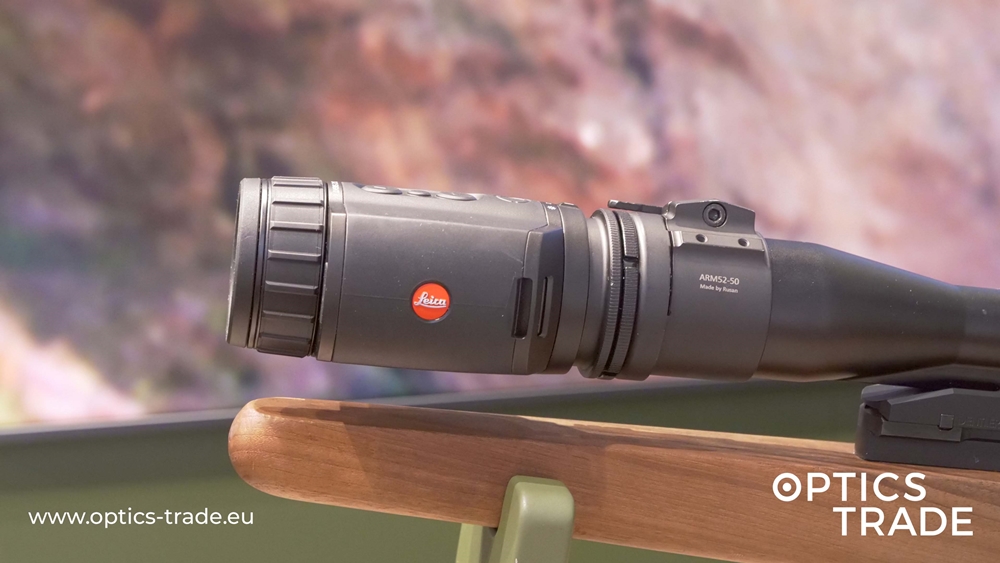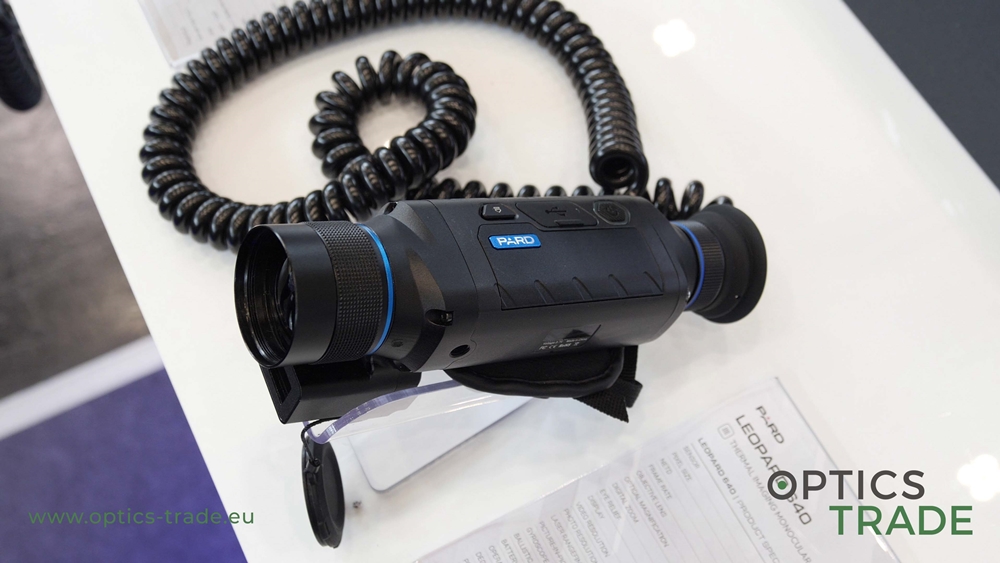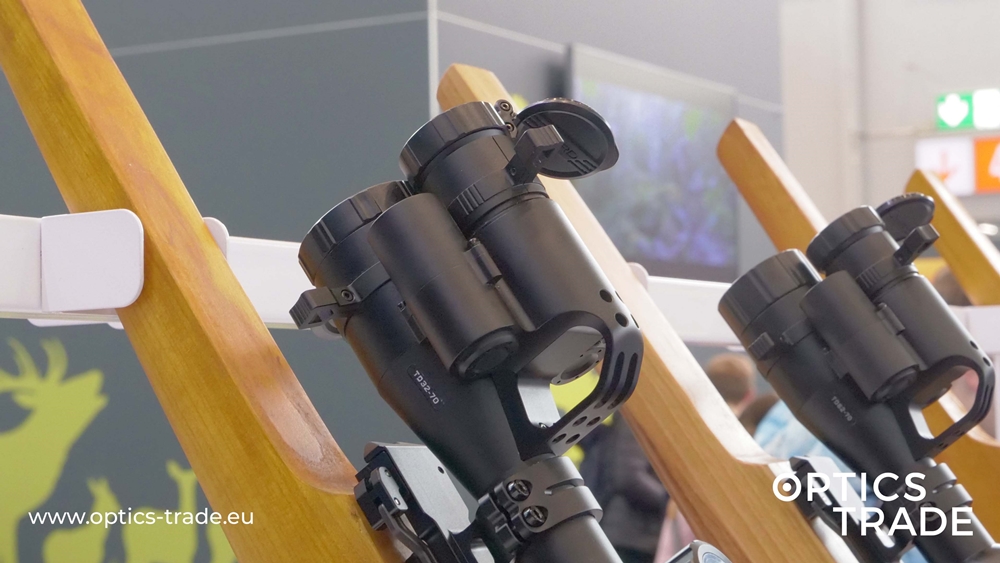Hello and welcome to another episode of Optics Trade Debates. Today, we will discuss the differences and similarities between two thermal clip-on attachments made by Pulsar, namely Proton and Krypton. Both are new (especially Proton) but fall under different price ranges.
Let us dive in and see what they have to offer. These two devices feature different types of sensors: The Proton has 388×284 pixels, with a pixel pitch of 17 μm, and NETD >40 millikelvins. The Krypton, on the other side, features 640×480 pixels, with a pixel pitch of 12 μm. The NETD is bigger than on Proton – 50 millikelvins – but the image quality is still better on Krypton, due to the higher resolution.
Pulsar Proton does not feature a focusing option, as it has a fixed focus of 100 m. The Krypton, however, can be focused with a focusing knob on the top of the device. Krypton features a much bigger display of 1746×1000 in comparison to Proton and its 1024×768 display. In terms of resolution, this means that the user is able to use the device with higher magnification on Krypton.
Both optics feature an AMOLED display so they can withstand extremely low temperatures, even as low as -25° C. Both devices also feature a waterproof body (IPX7 certified), and the bodies are made of magnesium. Pulsar Proton, as well as Pulsar Krypton, need to be zeroed before first use, and they have the same simple systems to do so: going to the menu and changing the point of impact into the centre of the reticle.
Optically speaking, Krypton is better, but it is far more expensive as well. Proton costs roughly 2.500 € – 2,600 €, while Krypton costs 4.200 €. For the physical properties, we already mentioned things like the form and finish, which is slightly better on the Proton.
The batteries are also different. Proton (APS5 battery) is the first Pulsar clip-on device that comes with 2 batteries. Krypton, on the other hand, comes with an IPS7 battery, which lasts around 7 hours. When you start using Pulsar devices with interchangeable batteries it becomes rather difficult to go back to any other. That is because the biggest problem with competitive devices is that they have integrated batteries – if the battery dies while on the field, you can only use a power bank.
Pulsar Krypton is already quite lightweight and compact, but looking at Pulsar Proton, it seems unbelievable to see how small it is. If you have iron sights on your rifle, the optic will not touch the barrel because it is positioned higher than the lowest part of the adapter.
Both of them feature a new thread for adapters – it is no longer a Bayonet – like it was on the Core devices. Most people rather opt for reducing rings from SmartClip or Rusan along with adapters from the same brands. It is an elegant, high-quality solution that makes sure the device is fixed in place. This is a much better solution than the previous ones Pulsar introduced, like the adaptor with 2 pins on Core or with 4 pins on Forward.
Krypton still uses the micro-USB port, while Proton uses the USB Type-C port. The two optics are both IPX7 waterproof, and both withstand .375 H&H recoil, which means you can put them on almost any rifle. With the Proton, the user also gets a battery charger, whereas, with Krypton, you also get it, but it is of a different type, as you can only charge one battery at a time.
Moving on to the multimedia features, as after all, we are in the 21st century, and having the ability to share your moments with others is really important to most people. This is why both these devices have multimedia capabilities. Proton and Krypton can capture images, record videos, and have Wi-Fi connectivity – if you have Android or IOS, the devices can be connected to the Stream Vision app.
The software on the two devices can also be upgraded, so you can always have good image rendering. Pulsar is constantly upgrading its devices, so upgrading with a single click is extremely useful. Overall, Proton and Krypton are extremely well-made, durable devices, which have a long warranty period (3 years), along with interchangeable batteries – which makes both a solid investment. Both devices have lens covers that are not attached to the housing, which makes it quite easy to lose them.
This brings us to the market positioning part of the debate. Pulsar Proton belongs to the entry-level class and Pulsar Krypton to the premium class. Truth be told, there are more expensive devices on the market, but once you begin using Krypton and see all it offers, it is difficult to use something else. With both devices, there is an option of buying them with or without the monocular.
If we left anything out, you can remind us by leaving a comment in the comment section, or by writing us an e-mail, and we will gladly respond. If you liked this debate, do like the video and subscribe to our channel, and check out our other videos. See you in the next debate and take care.
Products mentioned in the Pulsar Proton vs Pulsar Krypton debate:
Pulsar Proton: https://www.optics-trade.eu/en/pulsar-proton-fxq30-thermal-imaging-front-attachment.html
Pulsar Krypton: https://www.optics-trade.eu/en/pulsar-krypton-fxg50-thermal-vision-front-attachment.html
Follow us on social media:
Facebook: https://www.facebook.com/OpticsTrade/
Instagram: https://www.instagram.com/opticstrade.hunting/
Blog: http://optics-info.com/
Flickr: https://www.flickr.com/photos/opticstrade/albums
Pinterest: https://www.pinterest.co.uk/opticstradeeu/
LinkedIn: https://www.linkedin.com/company/optics-trade




